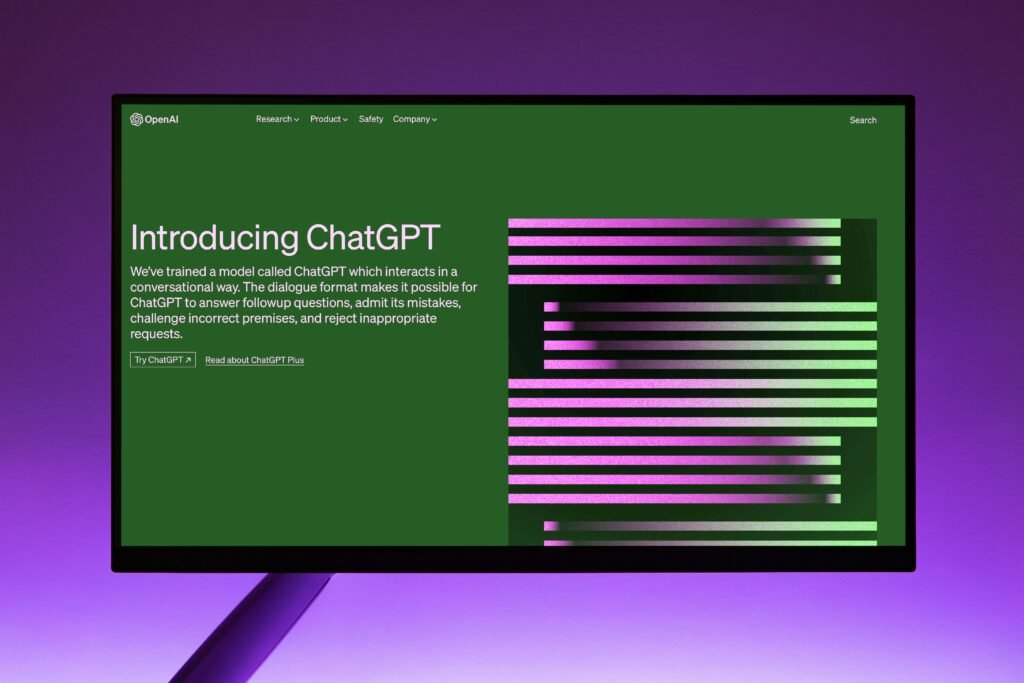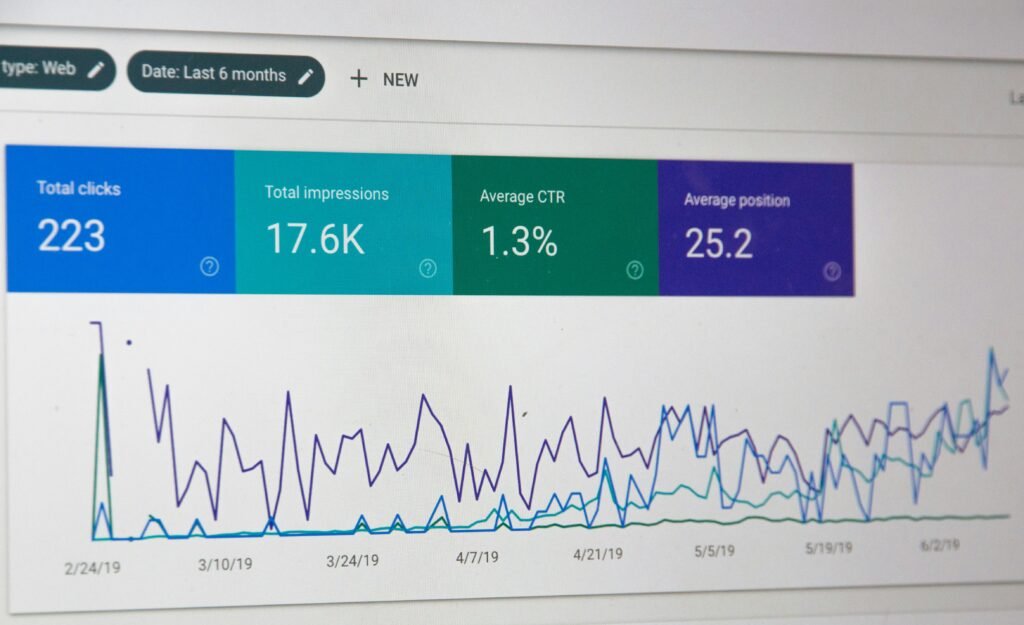
Introduction to ChatGPT
ChatGPT represents a significant advancement within the realm of artificial intelligence, specifically as a conversational agent. Developed by OpenAI, ChatGPT is based on the architecture of the Generative Pre-trained Transformer (GPT) model, which utilizes deep learning techniques to understand and generate human-like text. This sophisticated AI chatbot is designed to engage users in interactive dialogues, making it a powerful tool for various applications ranging from customer support to content creation.
The primary purpose of ChatGPT is to provide users with informative and coherent responses, thereby simulating natural conversations. By leveraging vast amounts of data, the model can generate contextually relevant answers, enhancing the user experience. The significance of ChatGPT in artificial intelligence lies in its ability to bridge the gap between humans and machines. As conversational AI continues to evolve, ChatGPT exemplifies the potential of advanced language models to facilitate meaningful interactions while demonstrating the nuances of human communication.
Among its many features, ChatGPT excels in understanding user prompts, adapting its responses based on the context, and maintaining conversational coherence over extended interactions. This makes it not only a valuable resource for individuals seeking information but also a beneficial asset for businesses looking to enhance their customer engagement through seamless dialogue systems. The continuous improvements in language understanding and generation have solidified the relevance of ChatGPT in modern AI applications, highlighting the ongoing developments in natural language processing. As the field progresses, the implications of ChatGPT’s capabilities extend beyond mere conversation, impacting various sectors, including education, healthcare, and entertainment.
How ChatGPT Works
ChatGPT operates on the foundation of advanced artificial intelligence techniques, specifically utilizing a deep learning architecture known as transformers. This architecture was introduced in the groundbreaking paper “Attention is All You Need,” which has since transformed natural language processing (NLP). The core mechanism of transformers is the self-attention mechanism, allowing the model to weigh the significance of different words in a sentence relative to one another, thus generating contextually relevant responses.
The training process of ChatGPT involves exposing the model to vast amounts of text data, encompassing diverse topics and writing styles. This dataset is derived from books, websites, and other textual sources, enabling the model to learn patterns, grammar, facts, and some level of reasoning. By implementing supervised fine-tuning, where human reviewers provide feedback on the outputs, the model iteratively improves its responses to enhance user experience.
During interaction, ChatGPT processes language by interpreting user input and generating output based on its training. When a user submits a query, the model first tokenizes the input, breaking it down into manageable pieces, and then utilizes the transformer architecture to analyze these tokens. Each token is evaluated in the context of the entire input, allowing the model to generate relevant and coherent sentences as its response. The integration of various NLP techniques aids in making the conversation smoother and more human-like, which is one of the goals of the ChatGPT framework.
Overall, the evolution of ChatGPT exemplifies a significant advancement in AI technology. Through its sophisticated architecture and training methodologies, it reflects the potential of chatbots to engage in meaningful dialogue, assist in various applications, and enhance user interactions, tightly weaving AI into daily life.
Key Features of ChatGPT
ChatGPT has emerged as a significant advancement in the field of artificial intelligence, particularly in the development of smart AI chatbots. One of its hallmark characteristics is the capability to engage in natural, human-like conversations. This feature allows users to interact with the chatbot as they would with another person, thus fostering a more intuitive experience. ChatGPT’s conversational skills are built on extensive training data, enabling it to understand and respond to a wide array of queries effectively.
An important aspect of ChatGPT’s functionality is its ability to handle context. Unlike traditional chatbots that often rely on linear dialogues, ChatGPT can retain the context of ongoing discussions, making it able to provide relevant and coherent answers. This context-awareness is particularly useful in prolonged interactions, where the user’s intent may evolve. Through its nuanced understanding of conversational flow, ChatGPT can maintain a sense of relevance that enhances user engagement.
Additionally, ChatGPT distinguishes itself through unique functionalities, including adaptability and learning capabilities. The model can adapt its style and tone based on user interactions, tailoring responses to meet specific needs or preferences. This adaptability helps in creating personalized experiences for users, a trait not commonly found in standard chatbots. Furthermore, ChatGPT’s underlying architecture allows it to learn from vast datasets continuously, which, in turn, improves its responses over time. By incorporating feedback and engaging with diverse conversational topics, the AI becomes more proficient in generating relevant answers to user inquiries.
These key features collectively contribute to making ChatGPT a powerful tool in the world of AI chatbots, setting a new standard for human-computer interactions.
The Evolution to ChatGPT 4.5
The journey to ChatGPT 4.5 marks a significant milestone in the evolution of smart AI chatbots, showcasing continual enhancements and ground-breaking technological developments. Since the inception of its predecessors, this generative AI model has seen substantial improvements in various aspects, including natural language understanding, contextual comprehension, and conversational fluency. Each iteration has been informed not only by the advancements in artificial intelligence algorithms but also by the invaluable feedback from users worldwide.
The ChatGPT versions preceding 4.5 laid the groundwork for these enhancements. With each new version, the developers addressed limitations that had been identified in user interactions. For example, earlier models struggled with maintaining context over extended conversations and often provided generic responses. The transition to ChatGPT 4.5 has aimed to resolve these issues by incorporating more sophisticated training techniques and advanced reinforcement learning methodologies. This has resulted in a chatbot that is not only more responsive but also markedly better at engaging users in meaningful discussions.
Moreover, the integration of user feedback has been instrumental in shaping the capabilities of ChatGPT 4.5. Insights from user experiences have driven the focus towards creating a more intuitive and user-friendly interface. The latest version is adept at grasping nuances, humor, and implicit meaning—a development that allows it to communicate with a degree of sophistication that was previously unattainable. Additionally, real-time updates and adaptability have empowered it to stay relevant in various conversational contexts, making it a versatile tool for users.
Specific innovations, such as enhanced emotional intelligence and the ability to handle diverse language styles, further distinguish ChatGPT 4.5 from its predecessors. These improvements reflect the commitment to creating an AI chatbot that not only meets but exceeds user expectations, paving the way for a future where human-computer interaction is seamless and engaging.
Applications of ChatGPT
ChatGPT has emerged as a versatile tool with a broad range of applications across numerous fields. One of the most prominent areas is customer support, where businesses utilize this AI-powered chatbot to manage inquiries efficiently. By integrating ChatGPT into their customer service systems, companies can provide immediate responses to frequently asked questions, automate ticketing processes, and enhance user satisfaction. For instance, a leading e-commerce platform deploys ChatGPT to handle common customer inquiries, resulting in reduced wait times and allowing human agents to focus on more complex cases.
In the education sector, ChatGPT serves as a supplemental resource for both students and educators. It is capable of providing explanations on a variety of subjects, aiding in homework assistance, and facilitating personalized learning paths. For example, educators can utilize ChatGPT to create tailored lesson plans that adapt to the needs of individual students, empowering them to learn at their own pace. Additionally, students can engage in interactive learning by posing questions and receiving instant feedback, thereby increasing their understanding of complex topics.
The content creation industry has also benefited significantly from ChatGPT. Writers and marketers harness this chatbot’s capabilities to generate creative content ideas, assist with drafting articles, and even optimize search engine results. By utilizing ChatGPT, content creators can streamline their workflows, ensuring that they remain productive while maintaining high quality in their writing. A digital marketing agency, for instance, employs ChatGPT to brainstorm blog topics, allowing the team to focus on crafting compelling narratives and strategies.
Lastly, the entertainment industry has found innovative ways to integrate ChatGPT into interactive experiences. Game developers use this smart AI chatbot to create narrative-driven games where players can interact with characters in real-time, enhancing the immersive quality of gameplay. This implementation not only enriches the player’s experience but also showcases the chatbot’s adaptability in understanding and responding to human emotions and actions.
Limitations and Challenges
Despite the significant advancements made in AI technology, ChatGPT is not without its limitations and challenges. One of the primary issues is its struggle to understand nuanced human emotions. While it can generate text that mimics conversational language, its inability to accurately interpret sentiments such as sarcasm, irony, or deep emotional expressions can lead to misunderstandings. This limitation hampers its potential in situations requiring empathy or emotional intelligence, making it less effective in personal interactions where human connection is vital.
Furthermore, the reliability of the information provided by ChatGPT can be questionable. While it is trained on a diverse dataset, it can occasionally produce responses that are factually incorrect or misleading. The model lacks a real-time update mechanism, meaning it does not have access to current events or emerging knowledge. Consequently, users may inadvertently receive outdated or inaccurate advice on specific topics, particularly those that evolve rapidly, such as technology or healthcare.
Contextual understanding is another challenge for ChatGPT. The model may misinterpret queries when queries are vague or complex, leading to responses that do not adequately address user intent. This limitation is particularly problematic in professional settings, where precision is essential. Users may find themselves needing to rephrase questions multiple times to achieve satisfactory responses, potentially causing frustration and inefficiency.
Additionally, there are ethical considerations surrounding the deployment of AI chatbots like ChatGPT. Concerns about data privacy, the potential for manipulation, and the impact on employment in various sectors are paramount. As AI chatbots become more integrated into everyday life, addressing these ethical implications is crucial to ensure responsible and beneficial use of the technology.
Future of ChatGPT and AI Chatbots
The future of ChatGPT and AI chatbots is poised to witness significant advancements driven by emerging technologies and shifting user expectations. As AI continues to evolve, we anticipate a trend toward more sophisticated natural language processing capabilities, enabling chatbots like ChatGPT to understand context and nuances in conversation more effectively. This will enhance user interaction, making communication with these AI systems not only more efficient but also more engaging.
Additionally, the integration of ChatGPT with other AI systems is likely to become a prevalent phenomenon. For instance, we may see a collaboration with machine learning algorithms and predictive analytics, allowing chatbots to provide personalized responses based on user behavior and preferences. This could lead to tailored experiences where the chatbot anticipates user needs, making interactions intuitive and fluid.
Moreover, as users become increasingly familiar with AI technologies, their expectations will evolve. Future AI chatbots are expected to handle more complex queries and perform a broader range of tasks. The demand for multi-functionality in chatbots will grow, pushing developers to create systems capable of everything from simple customer support to more intricate advisory roles in fields such as healthcare and finance.
Ethical considerations will also play a crucial role in the development of future AI chatbots. As we build increasingly advanced systems, ensuring transparency and accountability in AI interactions will be paramount. Users will seek assurances that AI chatbots adhere to ethical guidelines, particularly concerning data privacy and user consent. Consequently, the design of future ChatGPT models will likely incorporate safeguards to address these concerns, fostering trust in AI technology.
In conclusion, the trajectory of ChatGPT and AI chatbots indicates a future where these technologies will become more intuitive, interactive, and ethically grounded, catering to the multifaceted needs of users across diverse sectors. As we approach this future, the role of developers and researchers will be vital in shaping a trustworthy and efficient AI landscape.
Getting Started with ChatGPT
For those interested in experiencing the capabilities of ChatGPT, accessing this advanced AI chatbot is relatively straightforward. Users can start their journey by visiting the official website of OpenAI, where ChatGPT is hosted. Registration may be necessary, requiring users to create an account by providing an email address and setting a password. Once registered, users can log in and initiate their interaction with the chatbot, which is designed to assist with a variety of queries and engage in meaningful conversations.
To facilitate an effective conversation with ChatGPT, it is essential to formulate clear and concise questions. This AI chatbot responds best when provided with specific prompts, as vague inquiries may yield less relevant answers. Users are encouraged to take advantage of the conversational nature of the platform by engaging in a back-and-forth dialogue. This not only helps clarify questions but also allows for deeper exploration of topics of interest. Describing the context of inquiries can significantly enhance the chatbot’s understanding and ability to generate appropriate responses.
Additionally, to maximize the benefits of using ChatGPT, users should experiment with different styles of questioning. For example, users might find that a more direct approach yields quicker responses, while open-ended questions could inspire more elaborate conversations. ChatGPT is adept at learning from previous interactions, so frequent engagement will lead to improved responses over time. Furthermore, those using the chatbot for specific tasks, such as brainstorming ideas or composing text, should provide detailed instructions to guide the conversation effectively.
Conclusion
In summary, the journey of ChatGPT represents a significant milestone in the development of smart AI chatbots. Emerging from initial variations of conversational AI, ChatGPT leverages advanced deep learning techniques to foster human-like interactions. Its capacity to generate coherent responses, maintain contextual understanding, and adapt to various conversational nuances positions it as a valuable tool in numerous applications across industries.
The capabilities of ChatGPT are not just confined to casual conversations; they extend into realms such as customer service, content generation, and educational assistance. Users benefit from its ability to provide immediate responses, thereby enhancing productivity and user engagement. The integration of ChatGPT into software solutions underscores the growing need for intelligent systems that can communicate effectively with users.
Nevertheless, it is imperative to acknowledge the limitations that accompany such cutting-edge technology. ChatGPT, while sophisticated, does not possess true understanding or consciousness, which may lead to inaccuracies or misinterpretations in some interactions. It relies on the quality of the input it receives and may produce unintended or erroneous content. As users, it is crucial to approach its outputs with a critical eye and validate information when necessary, especially in high-stakes environments.
As we continue to explore the potential of ChatGPT and other AI chatbots, it is clear that these advancements will play a pivotal role in shaping future communication paradigms. By harnessing the strengths of these intelligent systems while remaining cognizant of their pitfalls, we can unlock new avenues for innovation and efficiency. Engaging with ChatGPT offers an exciting opportunity to experience the forefront of AI development, pushing the boundaries of human-computer interaction.




